Those who follow Portrait Session know that I consider myself to be an idiot when it comes to photography gear. I'm unlike my fellow Improve Photography guys in that I don't lust over the newest lenses, I don't nerd out about the latest camera models, and I certainly have no idea what great new treats are soon to be released. I do, however, have a certain passion for the things that every good wedding photographer should have in their bag, which is why I want to share with you what I believe is the must have wedding day photography gear. The gear that will allow you to improve the quality of your photographs, and in turn take your business to the next level.
Now, I'm not here to say that you can't be a wedding photographer if you don't have all of these things in your bag. I know that there are successful wedding photographers out there who shoot with old bodies or only 2 lenses. I'm also not here to say that the gear I have is the best and you should run out and buy everything I own. I am simply here to share the things that I think are crucial in order to be fully prepared for all of the environments and situations that weddings throw at you. With these pieces of gear in your bag, I promise you'll be ready to conquer a wedding day like a pro!
#1: A good bag

I prefer to use a roller bag due to the ease of mobility when carrying approximately 70 pounds worth of gear (this one, friends, is NOT an exaggeration). The bag I use is the ThinkTank Airport Security V 2.0 Roller Bag. This bag is big enough to hold all of my gear, but not too big to be carried onto a plane (which is great for destination photographers). It has a soft outer layer with a hard inside lining and cushioned dividers to keep your gear safe. The dividers are adjustable and removable so that you can organize the inside of your bag to your liking and make adjustments as needed when you buy more and more gear.
There are several zipper pockets inside and outside, which are perfect for smaller items like my super-hero kit I mentioned in a recent blog post. The bag even has an area dedicated to a tripod and backpack straps so that you can carry it on your back (although I'm not sure why anyone would do that…this thing is a beast). And, the best part in my opinion, is that it has several locks, cords, and cables so that you can not only lock the bag itself, but also secure it to an object, therefore reducing the likelihood of theft.
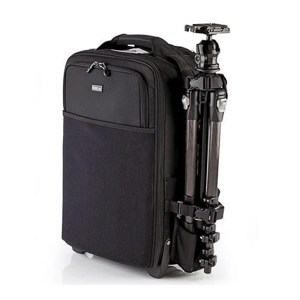
I've also recently fallen in love with my Shootsac, which I use on wedding days to carry just a couple of extra lenses, memory cards, water, etc. when I'm moving around a venue and have no need to carry my entire bag. This works really well during formals or during the ceremony when I know I'll want to experiment with different lenses or when I know I'll need to hydrate on the fly. The only thing I dislike about this bag is that it simply has a loose flap to cover your gear. The flap does not latch closed, so if you're not careful, you can easily dump out all of the contents. Definitely not the best thought considering the valuables it carries.
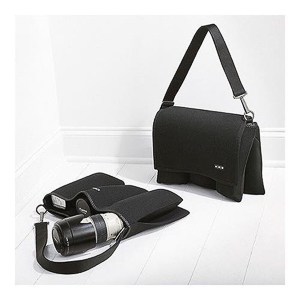
Many people carry cross body bags, sling bags, or even backpacks on wedding days. To each their own, however I'm of the belief that anything that takes pressure off of my already aching back is best for me. For those of you who might be interested in a wearable bag, check out my friend Brian McGuckin's reviews of a variety of messenger bags and backpacks.
#2: A camera that performs well in low light
It’s inevitable that you’ll encounter extremely crappy light at some point on a wedding day. Most churches have dull lights that cast a yellow hue on everything in site. The majority of reception venues are dimly lit spaces with sometimes not even enough ambient light to be able to lock focus (that’s the WORST). Because of this, it’s absolutely crucial for all wedding photographers to have a camera that will produce beautiful images even in dark situations.
I personally use the Canon 5D Mark III and have the Canon 5D Mark II as a backup. Both of these cameras can operate at a super high ISO with minimal grain. I’ve found that using even an ISO of 5000-6000 on my Mark III isn’t a recipe for disaster, which is great news since almost every time I step foot in a church I have to crank the ISO.

If you do not own a camera that can handle low light situations, please, for the love of ALL the things, rent one for a wedding day. Never forget that someone is trusting you with some of their most important memories, and you only get one shot to do it beautifully!
#3: A zoom lens
Going back to that church scenario mentioned above, it is also inevitable that you’ll encounter a church that restricts photographers. I’d say that in at least half of the church weddings I photograph, I am restricted in some way. Most often, this restriction is in the form of where I can move during the ceremony. Some restrictions are more harsh than others, but I have been in some churches where I wasn’t even allowed to move out of the back row! If I had not had my 70-200 lens, the couple would’ve looked like ants in every single photo!!
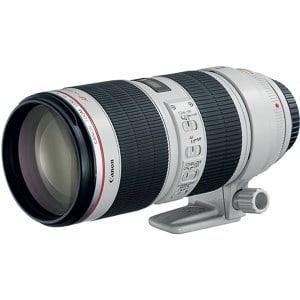
Another reason why I love my zoom lens is the compression is creates due to the focal length. This compression allows you to create beautiful bokeh behind your subject without worrying about losing sharpness on your subject due to a super wide aperture. My recipe for beautiful compression on my 70-200 is:
- shoot at 200 mm
- shoot at f/2.8
- pull your subject as far away from the background as possible
The further your subject is from the background and the more you zoom in, the more beautiful compression bokeh you’ll get. This is the main reason why my 70-200 is on my camera 90% of the day. Which, in turn, is why my right arm resembles that of Popeye.
#4: A wide angle lens
A year ago, I wouldn’t have included this lens on this list. When I first started photographing weddings, I had a Tamron 24-70 mm and did not like it at all. I ended up selling it and went a few years without owning a wide angle lens. If I ever needed a wider shot, I either stitched together a few photos in post-processing or moved reaaalllllly far away from the subject.
However, about a year ago, I experimented with a Canon 16-35 mm f/2.8 lens and fell in love. It has such a unique look and even the distortion that you can sometimes get from shooting so wide looks awesome if you do it right. Today, I use this lens for large bridal parties, in areas where I want to capture a lot of the natural environment, and for open dancing/party photos at receptions. This lens has actually allowed me to enjoy photographing dancing at receptions because if you shoot at 16 mm and immerse yourself into the party and dance floor, you can walk away with some really interesting and/or hilarious party photos. Also, you get bonus points for being the cool photographer who gets down on the dance floor with the guests.
If you're in the market for a good wide-angle lens, be sure to check out the lens finder. It's a really cool page where you can answer 5 questions about your budget, what kind of camera system you shoot, and what you want, and it'll automatically spit out the top 5 lenses to consider. It's a really powerful tool.

#5: A wide aperture lens
Not only do wide aperture lenses provide you with beautiful fall off and gorgeous bokeh, they also allow you to be more prepared for low-light situations. There’s no excuse not to have at least one lens with an aperture of at least f/1.8 in your bag. The “nifty fifty” lens (50 mm 1.8) is super cheap, super easy to use, and creates beautiful images.
#6: A macro lens
One of the most important parts of photographing a wedding is being able to photograph all of the beautiful details that make up the wedding day! These details include tiny little things like jewelry and diamonds, cufflinks, flowers, etc. The best way to walk away with impressive photographs of these little details is to use a macro lens.
When I first started photographing weddings, I did not have a macro lens. Instead, I used my 50 mm lens to photograph the rings, jewelry, etc. While the photos were fine, they were not super impressive because I couldn’t photograph the intricate details of these things because the 50 mm simply cannot do that. My photography changed drastically once I bought a macro lens and could create beautiful photos of rings, flowers, jewelry, and other small wedding details.
If you're in the market for a new macro lens, I'd highly suggest checking out this macro comparison review. And, if you can’t afford a macro lens at the moment, I’d suggest you check out less expensive options such as extension tubes or practice perfecting your free lensing technique.
Oh, and if you need some help producing inspiring and beautiful ring shots, check back for my next post on this very subject!
#7: A reliable speed light system (and the knowledge to use it!)
Flashback to the dark reception situation and you should be able to understand why a reliable speed light system is so necessary. Speed lights are a saving grace for most wedding photographers, as they’re the only way you can produce well lit photos in dark venues without cranking your ISO. By combining a solid speed light system with a solid understanding of the system, you can create beautiful images with interesting lighting while allowing the beautiful ambient light to also come through.
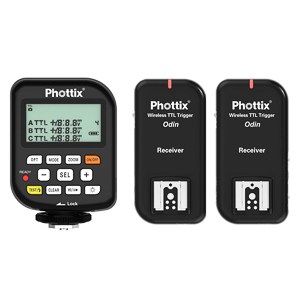
My speed light system is somewhat of a cluster, but it works well for me. I use Phottix Odin triggers and receivers with one Phottix Mitros + speed light, one Canon 600 EX speed light, and one Canon 580 speed light. I’m a huge fan of this system because it’s a wireless system that allows for full functionality control directly from the trigger on my camera. Gone are the days of having to adjust power on the actual flash. It’s so convenient to be able to change my settings on all flashes directly from the camera.
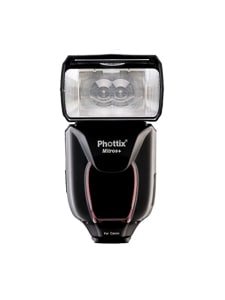
This system combined with my knowledge of light and creative light allows me to create dramatic, well-lit images in any lighting situation.
#8: A plethora of reliable batteries
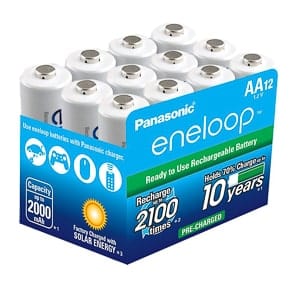
You know what they say….you can never have too many batteries!
Ok, maybe they don’t say that, but I’m going to say it anyway.
Between cameras, speed lights, triggers, receivers, and any other electronic device that may find it’s way into your bag, you’re destined to need approximately one million batteries at any given time. Be sure you always have more than you think you’ll need (I always have double what I actually need).
I prefer the Eneloop Rechargeable Batteries for my speed light system, these chargers, and Canon brand batteries for my camera. Also, I love using bullet cases like this for storing my batteries. The AA batteries fit in there perfectly!
#9: A killer memory card
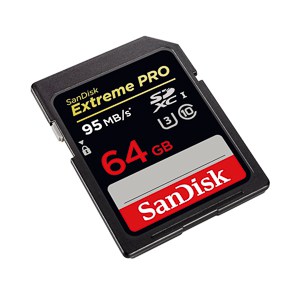
While I don’t typically shoot in rapid fire mode, you never know when you might need to, so it’s important to have a memory card that can handle fast shooting. You also need to make sure you have enough storage space, so keep in mind that multiple cards are necessary for a full wedding day. And, finally, make sure you use a reliable brand. The WORST thing that could happen to a wedding photographer would be to lose a client’s images because of a corrupt memory card.
I personally use the Sandisk Extreme Pro cards. I shoot on dual cards (1 SD card and 1 CF card) just to make sure everything is backed up. My SD cards are 32 GBs and my CF cards are 8 GB and 16 GB. To read more about some of the best memory cards out there right now, check out this memory card review.
Oh, and one final note on memory cards, be sure to replace your memory cards every once in awhile to avoid corruption. The older the card, the more susceptible to issues it may be.
#10: A good camera strap
Eight to 12 hours of walking, crouching, and climbing with a camera around your neck will likely leave you feeling like you need a wheelchair for a day or two after a wedding. Save yourself the pain and invest in a good camera strap. There are tons of options out there, ranging from cross body straps, to belts, to harnesses.
I personally prefer my Spider Pro Holster belt with a hand strap. After using a cross body strap for years and suffering from major back pain during and after the wedding, I found the Spider Holster and haven’t looked back. While I still ache a bit at the end of the wedding (who wouldn’t after 8-12 hours on your feet?!), the difference it makes is amazing. Sure, sometimes I feel like a gun-toting cowgirl, but when I realize how good my back feels, I instantly feel more like a gun-toting Lara Croft.

A few other things that aren't must-haves, but I love anyway…
- Tilt Shift: I use the Canon 45 mm tilt and LOVE it. I can't imagine life without it now.
- MagMods: They're portable, durable, and wonderful little speed light modifiers. I love them, even if they do make me look a little nerdy. Check out this episode of Portrait Session, in which we compare MagMods with other speed light modifiers.
- Ice Light: It's like a light saber for photographers. It seriously gives you beautiful window light at any time, in any place.
So, tell me what you think. Are there things that you think wedding photographers should not work without?

Such great advice, Erica. Every prospective wedding photographer should bookmark this page. What you describe here is quite the investment, but you provide a great wedding day kit to work towards. I especially appreciate all of the specific links to products you provide. As always, sage advice for the masses!
Thanks, Aaron! I always appreciate your support 🙂
Rock solid list. 16-35 is fun and differentiates your work. The 24-105 is great too.
hi
i’m Bangladeshi
how are you
my hobby photography
u help me for suggestion
Agreed! I’d love to have the 24-105 for travel photography!
canon 1200d use now
my lens 18-55 mm
i do use 400 mm lens for 1200d
Seems like a good setup!
Hi
I have a canon 5DsR. And 24-70 mm lens and a 50 mm lens., and. 100-400 mm lens.
Thanks for the tips. My next purchase would be 16-35 mm and 70-200 mm
How is 85 mm prime lens?
Regards
I don’t personally have the 85 mm, but I know many many photographers who LOVE it! It’s one of the most common portrait lenses, so you definitely can’t go wrong with it!
Hi. I am new to photography and only recently obtained my Nikon 3300 for Christmas. I have upgraded my lense and now have 18-55 and 75-300.
I enjoy wildlife outdoor landscape photography. I live in Kent and wondered if anyone else on here was from kent who would like to meet up for self teaching etc.
Congratulations, Jill! I hope you’ll grow to love photography as much as I do!
Thank you so much for the information. I have just spent about 2 or so hours roaming this site and all your wisdom/knowledge/tips you’ve been sharing.
I am recently/slowly getting into more of Wedding Photography. I have done a few as a secondary shooter, and just recently started doing my own Engagement shoots and such. I have the Canon 6D with the 35 mark 2, and though I also have the 70-200 it is only the f4 (which in great conditions in great, but great conditions don’t come that often). I was thinking of renting the f2.8 version, but have heard that sometimes the tripod mount can get the in the way when handheld shooting. Do you find this to be the case?
Also, when learning off camera flash lighting, do you have any recommendations on where to try it/in what settings to practice prior to go into a full on wedding? I have never dabbled into it but I’ve read around that it is something important to get into.
Thanks again for all your hard work you put into these articles and blogs.
Hi Maria! That’s awesome! What an exciting time you’re in right now. I remember those days 😉
I actually really love my tripod mount on my 70-200. I actually hold it in my hand as I’m shooting to steady myself because it’s so heavy. If you decide you don’t like, it’s super easy to remove so you can shoot without it.
You’ll definitely want to get familiar with off camera flash if you’re planning to shoot weddings. It’s very difficult to capture the environment naturally without OCF. I recommend bringing in a model (or just recruiting people you know to sit for you) and practicing the techniques. You can find many helpful tutorials here on Improve Photography and even more helpful video tutorials on Improve Photography Plus.
I hope this helps!